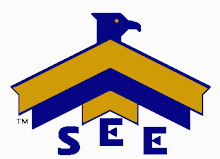Brainstorming does not work.
That’s right. Brainstorming as most people think of it is highly ineffective and does not achieve the level of collaborative input desired. The brainstorming that incorporates twenty or so of your team members and peers with the obligatory facilitator, flip chart pad and colored markers does not work.
There is a pretty large population of people that will not share their ideas, suggestions and thoughts in this type of forum. Some people fear embarrassment, ridicule or even just speaking in front of a group. No matter how comfortable you make the environment, they are going to contribute very little or nothing at all. Worse yet, they may even openly mock the process because of their discomfort and pollute the participation of others. These people have great ideas, they just will not share them in a traditional brainstorming environment.
There is also a population of people that require time to process information and formulate ideas. They do not do well in an environment that rewards near auctioneer speed in conveying thoughts. They want to collect themselves, play around with various scenarios and have time to form something that meets their standards. Brainstorming sessions exclude the great ideas from this group.
Before we visit what processes work to achieve collaboration in innovation, we must examine why collaborative innovation is desirable. If you are an effective leader and have great ideas, why do you need the input from others?
The effective leader is looking for innovation partners and not just innovation participants. Ownership and buy-in are only achieved with participation. You cannot demand buy-in, sell buy-in or purchase buy-in. It is only achieved when others can willing participate in the process. As the leader, you get a team that believes they designed the innovation rather than was victimized by the innovation.
A collaborative approach to innovation also assists the leader in seeing potential unintended consequences of an new approach or change. The different views from your team and the perspectives they represent can be real eye-opening to the leader. They have operational level and daily knowledge that even the most in-tune leader will never know. Quite simply, they know what works and often, what is best for the customer or end user.
There is a short process to obtain collaborative input from your team or others in an innovation process. The first step is to announce the issue or process that you would like input about. As a general rule of thumb, give people a ten to twenty day window of time to think about what you want them to have ideas about.
The second step is to require, yes require, input. That is achieved by sending your team members a note or form with the identified issue or process and requesting that each team member produce three suggestions or ideas for how to perform it better. Establish a deadline and build a follow-up mechanism to insure you receive feedback from each team member or organizational participant. Upon receipt, be sure to thank each team member for the input, no matter the quality.
The next immediate interim step is to reconcile the written comments from your team. There are two areas of awe that occur here. First is the feedback that you will receive from the quietest members of your group. The ones that never speak in a staff meeting or traditional brainstorming session will come up with and articulate some great ideas. The second awe point relates to the degree of commonality. Commonality between your approach and theirs and commonality between their suggestions. Leaders who utilize this method report that out of hundreds of individual ideas, they can be edited down into a dozen or so common responses. Different words but same processes or suggestions.
The final step of this collaborative innovation model is the only public airing and it is a relatively brief one compared to traditional brainstorming. A group meeting is conducted and all the ideas are presented equally. The leader can include his or her suggestions and ideas on equal footing with other input and feedback at this time. With each idea out in the open, the leader or facilitator will begin reconciling ideas by pairing people, then in groups of four, groups of eight and finally the entire group to build ideas and suggestions that represent the entire group. Everyone participates and everyone is represented in this reconciliation. Ideas are formulated, documented and fully vetted. Each of the consolidation steps are time sensitive with short deadline periods to avoid over-pontification by any one group member. The team leader often excuses himself or herself from this process because of the influence they carry among team members.
Collaborative innovation takes a little more time and work but the results and the buy-in of affected stakeholders is dramatically better than dictated ideas and solutions.
Subscribe to:
Post Comments (Atom)






No comments:
Post a Comment